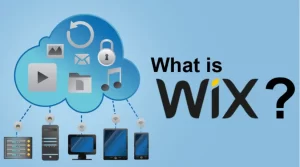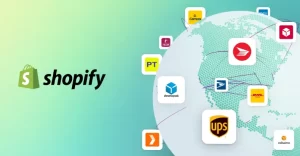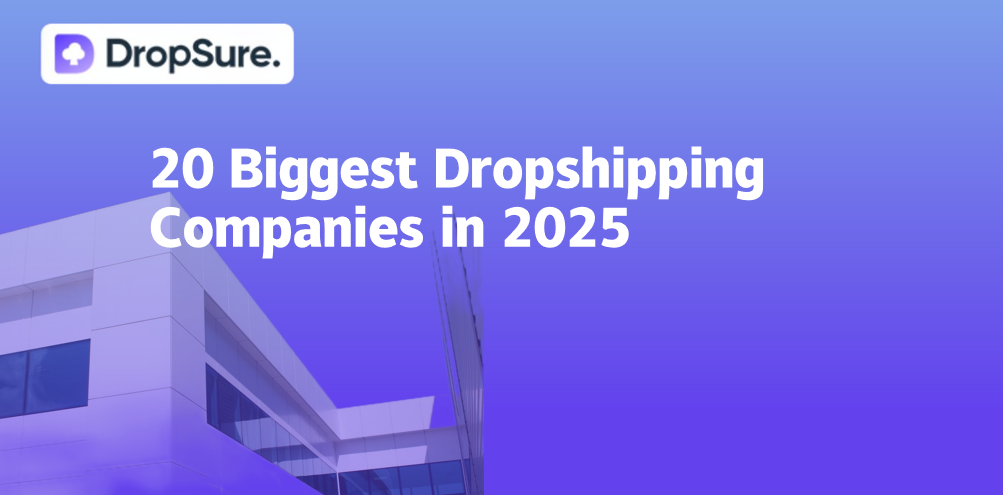
Since their launch in 2006, Wix and Shopify have captured the attention of countless entrepreneurs — after all, who doesn’t dream of owning their own “digital store” without having to dance to the tune of Amazon or eBay’s endless rules?
Wix, with its drag-and-drop simplicity and flashy templates, quickly became a favorite among small teams who love DIY and want unique, personalized pages. On the other hand, Shopify carved out a name for itself with its out-of-the-box usability, complete e-commerce workflows, and a powerful plugin ecosystem — perfect for sellers aiming to scale their business like pros.
But when it comes down to it, which should you choose: Wix, the “creative design guru,” or Shopify, the “e-commerce powerhouse”?
Don’t worry — I’ve got you. Below, I’ll break it down across five key factors
1.Ease of Use (Beginner-friendliness)
2.Cost Pressure (Pricing & Trial Policies)
3.Design Flexibility (Templates & Customization)
4.Feature Power (Core E-commerce Tools)
5.Growth Potential (App Ecosystem & 3rd-Party Integrations)
With this simple, no-nonsense comparison guide — including a one-glance table to help you decide — you’ll know exactly what suits your needs. Who wins in the end? Stick around — I’ll give you a straight answer, no fluff.
Wix Overview

Wix is an Israeli tech company founded in 2006, best known for its “no coding needed, what you see is what you get” website builder. As a versatile site creation tool, Wix can be used for a wide range of purposes — from blogs and business websites to online course platforms, booking systems, and e-commerce stores.
In recent years, Wix has been steadily strengthening its e-commerce capabilities, launching a dedicated Wix eCommerce module that offers a full suite of tools for building, selling, and managing independent online stores.
Today, Wix powers over 500,000 online stores across global markets, helping entrepreneurs bring their ideas to life — without writing a single line of code.
Wix’s Advantages
Robust Security Infrastructure
Wix invests heavily in website security, featuring a 24/7 automated defense system to repel DDoS attacks and other cyber threats. On top of that, a dedicated in-house security team constantly monitors for vulnerabilities and fine-tunes the platform. Every third-party app in the Wix App Market undergoes rigorous review to ensure your site’s data privacy, payment details, and overall security remain uncompromised.
Comprehensive Auto-Backup & Versioning
Wix provides automatic content backups and one-click version restores. As you edit your site, the system snapshots each change—so if you ever make a mistake or lose data, you can instantly roll back to any previous version, minimizing operational risks.
Omni-Channel Sales Integration
Wix eCommerce lets you sync your store across Facebook, Instagram, Amazon, eBay, and more. Manage products, orders, and inventory from a single dashboard—perfect for fulfilling omni-channel strategies, boosting efficiency, and expanding your reach.
Flexible Design & User-Friendly Interface
With its intuitive drag-and-drop editor, Wix lets you build a site without writing a line of code. Choose from hundreds of professionally designed templates and visual elements tailored to different styles and industries—so small businesses and solo entrepreneurs can launch a polished brand presence in no time.
Wix’s Drawbacks
Templates Cannot Be Switched Once Selected
While Wix offers a wide variety of templates, it comes with a structural limitation: once you choose a template and start editing, it gets locked in. There’s no way to switch to a different template later without creating a new site and manually migrating your content — which can be a hassle and limits flexibility.
Mobile Display Requires Manual Optimization
Wix uses an “absolute positioning” layout system. Although templates are technically responsive, elements like images and text may appear misaligned or messy on mobile devices. To ensure a clean mobile view, users need to manually tweak the layout in “Mobile View Mode.”
E-commerce Features Are More Suited to Beginners
Wix eCommerce covers essential features like product listings, payments, multiple gateways, and basic promotions. However, for intermediate or advanced sellers with complex needs (e.g., multi-warehouse fulfillment, layered discount rules, multi-currency checkout, bulk SKU management), Wix’s built-in tools may feel limited. You’ll likely need third-party apps — which can mean extra cost and integration work.
Shopify Overview

Shopify is a Canada-based tech company founded in 2006, dedicated to providing e-commerce website building and operational solutions for sellers around the world. Unlike general-purpose platforms like Wix, Shopify is built purely for selling—a vertically focused SaaS platform tailored specifically for e-commerce.
Think of it as a virtual store you “rent” monthly: sellers can customize their branding, upload products, manage orders, and connect to global sales channels—all on Shopify’s infrastructure.
Today, over 4 million merchants across 175 countries use Shopify to power their online stores. With a total Gross Merchandise Volume (GMV) surpassing $900 billion, Shopify has become one of the fastest-growing e-commerce infrastructures in the world.
Advantages of Shopify
Secure, Compliant, and Stable
Shopify is 100% PCI DSS compliant, meaning it meets the highest data security standards in the payment card industry. It can securely handle credit card payments, user privacy, and financial data. The platform features a built-in fraud analysis system that automatically detects and flags suspicious transactions, helping sellers avoid risks. Shopify is hosted on globally distributed high-availability cloud servers, offering stable performance and supporting high-traffic scenarios—perfect for large-scale promotions.
Laser-Focused on E-commerce
Unlike other platforms that “can build anything,” Shopify is built specifically for “setting up shop and selling.” From the moment a new user signs up, they’re guided straight into product uploads, payment setup, shipping configurations, and more. The interface is clean and intuitive, with no need to switch between multiple pages to get things done—perfect for beginners who want to dive right into e-commerce.
Mature Ecosystem with High Global Compatibility
Shopify holds roughly 10% of the total U.S. e-commerce market share and boasts over 8,000 official app integrations, covering everything from dropshipping and print-on-demand (POD), to global warehousing, auto-fulfillment, SEO, and data analytics. Whether you’re using Sup Dropshipping, DSers, Printful, or integrating with U.S.-based warehouses, Shopify connects seamlessly, forming a complete operational loop.
Additionally, Shopify natively supports multi-language, multi-currency, and multi-tax configurations, and easily integrates with global payment gateways like PayPal, Stripe, Shopify Payments, and credit cards—making it an ideal choice for cross-border e-commerce sellers.
Omnichannel Sales Integration
Shopify offers built-in tools to connect and sync products across platforms like Facebook Shop, Instagram, TikTok, Google Shopping, Amazon, and eBay. This allows merchants to manage all their channels from one dashboard—massively boosting visibility and operational efficiency.
Disadvantages of Shopify
High-Quality Themes Often Come at a Cost
Shopify offers a limited number of free themes, most of which are basic in functionality and minimalist in design. If sellers want a more premium visual presentation or a strong branded look, they usually need to purchase a paid theme—most of which cost over $180 USD. For small businesses just starting out, especially those not yet turning a profit, this can be a significant upfront investment.
Short Free Trial Period
Shopify’s standard free trial lasts only 3 days (occasionally extended through promotions, e.g., $1 for 3 months). This tight window can be stressful for beginners who need to complete site setup, install plugins, configure payments, test orders, and integrate shipping within a short time frame. The limited trial period often leads to rushed decisions and duplicated work.
Limited Chinese Support
While Shopify has released some Chinese documentation and plugins, its overall Chinese-language ecosystem still lags behind domestic website builders. For instance, customer service systems, app descriptions, and portions of the admin interface are primarily in English, posing a learning curve for users with limited English proficiency.
Summary
Shopify is a globally recognized platform purpose-built for e-commerce, offering exceptional stability, security, and scalability. It’s particularly well-suited for intermediate to advanced sellers, cross-border merchants, and those using Dropshipping or Print-on-Demand (POD) models. With its mature app ecosystem, powerful backend flexibility, and broad payment integration, Shopify stands out as one of the most mainstream solutions for building independent online stores worldwide.
However, compared to more “budget-friendly” website builders, Shopify comes with a higher cost, pricey templates, and less comprehensive Chinese support. The initial learning curve may be steep, making it more suitable for those with a clear business model and a long-term operational plan.

 9 min read
9 min read








